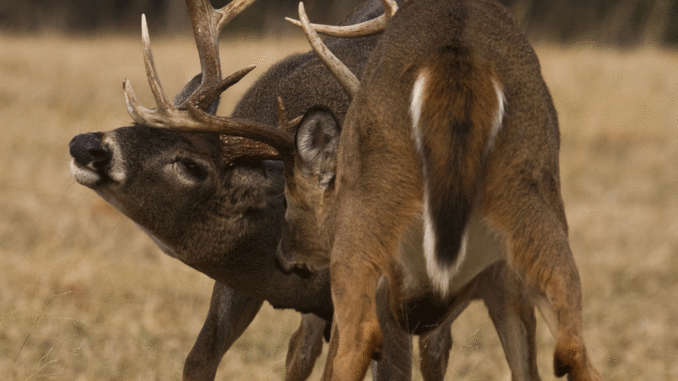
Even though some bucks let their guard down as breeding season peaks, hunters can’t afford to make any mistakes if a trophy is their target.
It’s the time of the season when deer hunters in South Carolina have their best chance of taking the trophy buck they know lurks in their woods.
Based on scientific data from the S.C. Department of Natural Resources, we’re in the rut — at one stage or another — throughout the state right now.
While the peak of the deer breeding season is certainly a time to be eagerly anticipated, it is not a time to get reckless in hunting approach or style — especially if you hope to harvest one of the big bucks that might have their guard down ever so slightly.
According to veteran hunter Bill Garner, a resident of Kershaw County who hunts much of the piedmont region, this is the time of year when hunters needs to ratchet up their efforts. Garner strives to improve his sense of doing things right in terms of factors such as wind, scent and scouting, plus general woodsmanship tactics.
“Although a buck’s tendency to move more during the day and let his guard down a bit is what makes the rut so productive, that doesn’t mean hunters can quit doing all the things they normally should do to be successful,” Garner said. “In my opinion, it’s more important than ever to use the wind to best advantage, be quiet, be scent smart, move sparingly and watch closely for movement. The reason is that during the rut, the payback for such effort can be huge — as in bagging the biggest buck of a season or lifetime.
“The rut means the deer, especially bucks, are chasing does and moving around more,” he said. “They use their senses more to trail the other deer, thus, they don’t put their full effort into scenting humans and staying alive, which is a common way for mature bucks to survive. If I stink up the woods by sitting in the wrong place, and the buck approaches from downwind, he’ll likely spook. If a hunter fidgets in the stand, the buck will likely see him first, and we all know what that means: seeing the south end of a northbound deer as he evaporates into a thicket.
“If you walk around too much, you’ll literally walk up on a deer, and unless you get very lucky, he’ll elude you,” he said. “I do suggest you scout mid-day in moderation for very fresh deer sign. Use a climbing stand if you can, and set up near these areas to improve your odds of seeing a trophy buck.”
Another hunters who hunts the entire season but keys on the rut for trophy deer is Joe Kelly, a Laurens County resident. Kelly has hunted throughout the country and understands what South Carolina hunters face.
“One thing I’ve learned from traveling and hunting a lot of places is that taking deer in South Carolina is as challenging as it gets,” Kelly said. “So to be successful, even during the rut, there are specific tactics that will help hunters get a shot at a trophy buck.”
Kelly said that one of his favorite things about hunting the rut is that there are lots of ways to be successful. He said that depending on the specific terrain where you hunt, you can hunt from climbing tree stands, ground blinds or permanent stands. The rut allows great flexibility in the style you choose.
“Plus, it is prime time for vocalization and rattling, which not only help pull in that trophy buck, but are great fun as well,” he said. “The key is to plan your strategy based on the terrain you hunt and adapt it to take advantage of a buck’s preoccupation with mating.”
Kelly said there are some obvious signs that some simple scouting will reveal as the place to set up during the rut.
“I like to hunt a stand that overlooks a diversity of terrain,” he said. “If there is a draw or bottom near some thick cover that has fresh rubs, scrapes and recently used deer trails full of big tracks, it is a good place to start. Sometimes, I’ll hunt a place like this from the ground, backed up against a tree similar to turkey hunting or even in a ground blind. But getting up in a tree stand using a portable climber is often better, because you can see more of the area. Keep in mind to keep the height you climb the stand to the right level. Until all the leaves drop, if you get too high in a wooded environment, you can block off some of your vision.
“I also love to rattle and vocalize during the pre-rut, and it will also work during the rut as well, especially grunting and bleating” he said. “A dominant buck is always on the lookout for a doe in estrus and will quickly investigate other deer noises that might invade his breeding domain. But factor in the wind into your planning on this.”
Kelly notes that patience is a key when uses vocalization. Buck grunts, doe bleats and combinations of these vocalizations will work if the right buck hears it. Not all bucks will respond to calling.
“Over the years, I’ve watched many bucks as I call to them,” he said. “Often, they turn and approach in my direction. Many times, they may look, but then continue moving the direction they were going. But when vocalization works, the results are awesome, and very importantly, I’ve never known a grunt or bleat, done properly, to spook a deer. My opinion is that vocalization can make the hunt, but not break it if not overdone. I rely on it heavily when bowhunting, and I need that buck to move just a few yards closer.
“Rattling is something I’ll do periodically during the day,” he said. “Sometimes it’s best when deer activity seems to slow down, but it can be effective at any time of the day. As with grunts and bleats, you won’t attract a buck every time so don’t give up on the tactic when you see no results, just try again later.
“While potentially very effective, for those hunters not real experienced with rattling during the rut, it can be overdone and can be counter-productive. I always start with a little bit of rattling and light clanging of the antlers to draw attention and hopefully have any nearby bucks check the source of the sound. I’ll increase the rattling and intensify it gradually. Rattling is effective, but it does mean that the hunter in a sense becomes the hunted so being very still, quiet and having the wind in your favor are important.”
The use of scents in the rut is marketed by many companies, and Kelly said there is certainly merit to using scents, but use good sense when doing so.
“One of the big factors is to not overdo the use of scents,” Kelly said. “Scents can be used to mask human odor, especially when walking in the woods to and from the stand or mid-day scouting. Also, buck-lure scents can be very effective, however, again, it’s easy to overdo.
“With a buck’s great sense of smell, it doesn’t take much to allow him to get the scent and home in on the source. I think the biggest factor in successfully using scents during the rut is to use the scent sparingly and placement where the buck will approach the source of the scent, but you’ll not be in his line of sight. They are still very alert and can be easily spooked. Stealth and moderation of rattling and scent is even more essential with big bucks.”
Garner said that another good game plan is to hunt where does are congregated.
“I am in the woods a lot during the rut, as a hunter should be, and I see a lot of does,” Garner said. “If I’m not seeing enough bucks, then I’ll shift my focus to the areas where the does are staying. You can bet the bucks will be checking in and around those areas consistently during the rut.”
Garner said that being able to read sign properly can help you determine the general movement pattern of bucks, which can be a big asset when selecting your stand site.
“It’s certainly a good idea to set up near fresh buck sign during the rut,” he said.
Scrapes are a good example, he said, although the peak of scrape-making activities may before the peak of the rut. Activity on scrape lines slows down because bucks are actively with does, but areas near scrapes are still a good area to hunt because that is the territory where bucks are lurking.
John Coit, a Lowcountry turkey guide at Bang’s Paradise Resort in Ehrhardt, has some definite ideas about what it takes to kill a big buck during the rut.
“One thing is, I’m always looking for deer sign, even when chasing turkeys,” Coit said. “Big bucks are taken throughout the season, and I think the South Carolina record book backs that up. But for most hunters, the rut is the prime time to get that wall-hanging buck, especially if someone is limited on the number of days they can hunt.
Coit said it’s best to first consider what’s happening in the woods during the rut. Deer patterns change dramatically from the early season to the rut and from the peak of the rut to later in the season.
“Dominant bucks will be trailing doe deer, but they will also challenge other mature bucks and run off smaller males,” he said. “At this time of year, the deer activity literally goes on around the clock. Also, hunting feeding areas becomes less important as the bucks focus more on breeding than eating. One good tactic is to know where does are feeding, such as around beanfields or cut cornfields in the Lowcountry, for example. You can find a doe feeding and have a big buck walk up on her, but it’s not the food he’s after.”
According to Coit, some hunters stay indoors on rainy days. He said that’s a big mistake.
“Hunting during a light rain can be great, but weathering a heavy downpour, waiting for it to end, is like the pot of gold at the end of the rainbow,” Coit said. “I recommend wearing a good rainsuit and staying in the stand and literally weathering it out. When the rain stops, I’ve seen deer start moving like crazy, especially during the rut. Some of the best deer movement I see all year is after a heavy or steady rain. Both bucks and does will be moving, and it’s a prime time to get a trophy buck.”
Coit said an often-overlooked strategy for many hunters is not hunting long enough.
“Because of their tendency to say on the move day and night, this is a great time to be in the woods all day long,” Coit said. “That’s certainly one of the primary game plans I have. I get and stay comfortable and hunt a long time. Many times during mid-day when other hunters take a break or walk the woods to scout, the hunter that stays put will take that trophy buck. Sometimes, I think the movement of other hunters may make deer move to my area where I am just sitting tight.”
If you hunt hard and hunt smart, the next few weeks may be the time you harvest that buck of the year or a lifetime. Sit in that stand longer than you normally would. Dawn and dusk don’t mean as much to deer; if a buck is on the trail of a doe that’s ready to breed, he’ll follow the scent whether it’s noon or midnight.
Big bucks can be taken any time, but these expert hunters know the prime time to bag a trophy buck is right now, during the rut.
Timing South Carolina’s whitetail rut
According to Charles Ruth, deer and turkey project supervisor for the S.C. Department of Natural Resources, deer can breed almost anytime during the fall and winter; there is no universal rule for when breeding will take place, he said. However there are peak times that can be generally pattered for different parts of the state.
“Generally, the last two weeks of October through the first two weeks of November is peak breeding time for most of the state. Location is another variable, however, November is a time that figures into the peak breeding season throughout the state.”
The below SCDNR map depicts the peak breeding times based on data from the SCDNR.
Good optics are essential
Joe Kelly has long recognized the importance of quality optics when hunting monster whitetails.
“I believe a hunter needs every advantage he can get,” Kelly said. “Using quality optics, both for the rifle scope and for binoculars, can be a real key to success.
“There are times when hunting deer the biggest bucks won’t step out until right at dark. A quality scope can add those precious few minutes to your ability to see and define your target in terms of what the rack on that buck really looks like. Then, if it’s what you want, you can harvest it. Bucks will move all day during the rut, but it still seems like the trophy deer prefer the low-light conditions.
“Success during the rut is also sometimes a factor of making long range shots,” he added. Again, quality optics are a key to success.”
Kelly said that putting money into a quality scope and binoculars is some of the best money a serious deer hunter can spend.

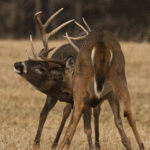

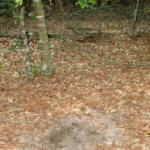
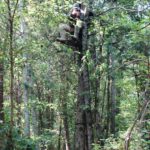
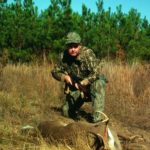
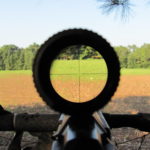
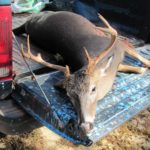



Be the first to comment